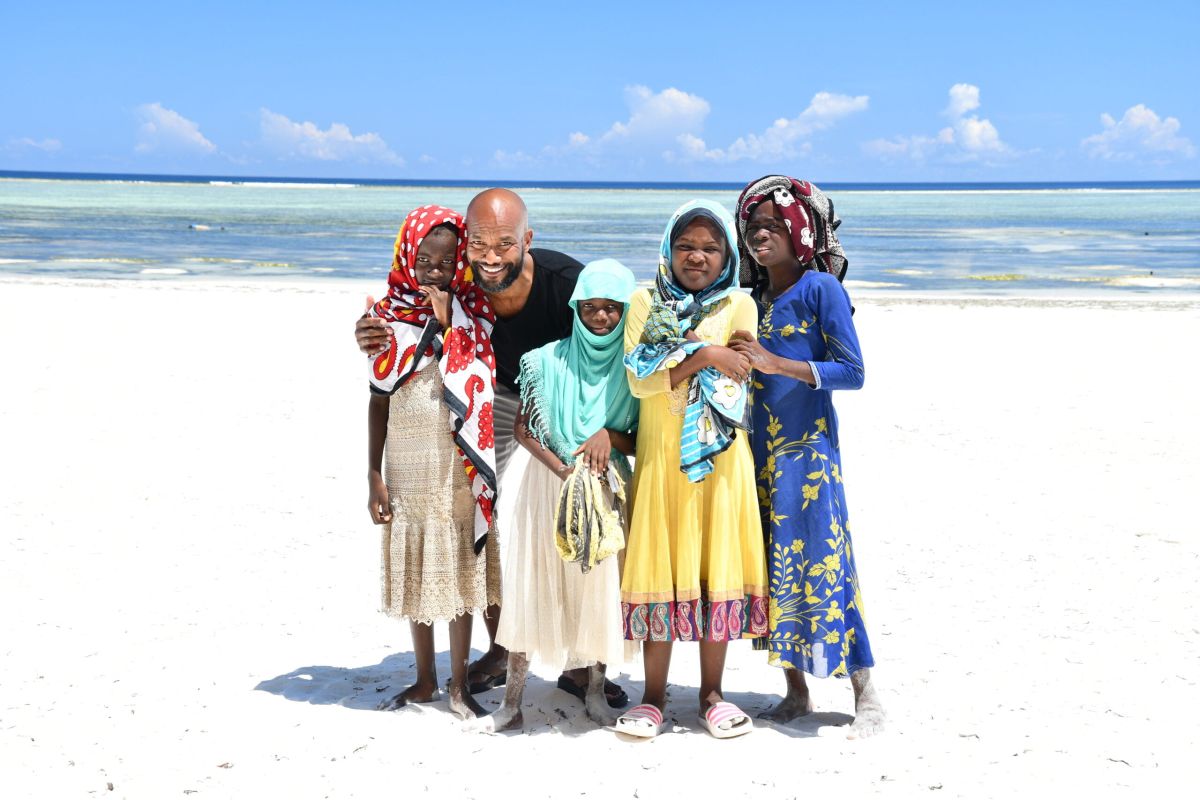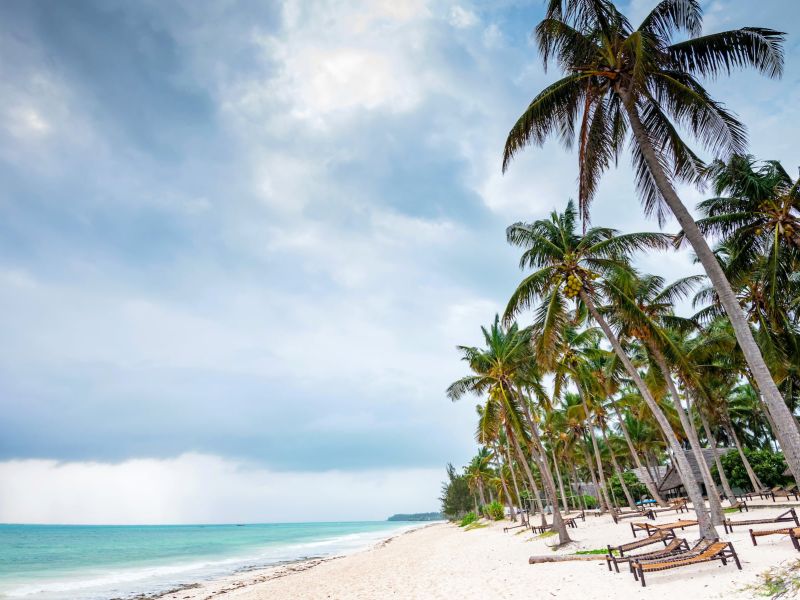
Zanzibar
A highlight of every Tanzania trip
A Zanzibar vacation is the crowning glory of any Tanzania safari: white sandy beaches and dazzling coral coasts make you believe this is paradise. The archipelago also offers cultural highlights and an unparalleled variety of spices.
Zanzibar is also enchanting: with its historic capital Zanzibar City, its dazzling coral coasts and seemingly endless sandy beaches, it is perfect for the highlight of your trip to Tanzania. Whether it’s a relaxing swim on one of the many dream beaches or the hustle and bustle of Zanzibar City, the island has something for everyone.


Spice island in the Indian Ocean
The Zanzibar archipelago is located around 30 kilometers off the coast of Tanzania. It consists of the islands of Mafia, Pemba and Unguja and covers an area of around 1700 square kilometers. Apart from its many dream beaches, the archipelago is known for its fishing, crafts and agriculture. And for spices! Did you know that Zanzibar meets 80 percent of the world’s demand for cloves?

Fascinating culture …
Zanzibar is characterized by Swahili culture – the traditional culture of the peoples of the coasts of Tanzania and neighbouring countries such as Kenya, the north of Mozambique and most of the islands in the Indian Ocean. However, “Swahili” refers not only to the culture, but also to the native language of the inhabitants.
The culture reflects the complexity of the history of these places: Their roots lie in the combination of original populations of Bantu and other peoples of Africa, but also of the Middle East, Persia, India and Europe.

… and an eventful history
The list of powers that ruled Zanzibar is long: from the 8th century, traders from the Persian city of Shiraz are said to have sailed to East Africa. They turned Zanzibar into an important trading center – especially for ivory, spices and slaves. They also built mosques and remarkable ships. The ships of the Ngalawa type, a kind of canoe, and Daus, sailing ships, are still characteristic today. Zanzibar later came into Portuguese possession. In the 17th to 19th centuries, under the rule of the Sultan of Oman, it was a center for the eastern slave trade. It was also a British protectorate from 1890 to 1963. Only then did Zanzibar become independent and – together with Tanganyika – became part of today’s United Republic of Tanzania.

Diverse architecture
The eventful history of Zanzibar is also reflected in its architecture: there are Moorish, Arabic, Persian, Indian and European influences to discover. The town centers are characterized by labyrinths of streets and alleys, markets and palaces. The historic capital, known as the “stone city”, is a UNESCO World Heritage Site. One of its most famous sights is the Palace of Wonders. It dates back to the time of the Sultanate of Oman. The Palace of Wonders owes its name not only to its white colonnade and elegant decor. The fact that it was initially the only building on the island to have electricity and the first in East Africa to have an elevator may also have contributed to this.

Cultural topicality
A visit to Zanzibar – especially the “stone city” – is a veritable journey through time: As you wander through the complex network of paths and alleyways, you immerse yourself in history. Those who come at the end of June or beginning of June will also experience cultural topicality. This is when the Zanzibar International Film Festival (ZIFF) takes place. It is the largest festival in East Africa and presents African, Middle Eastern and Indian films, music and art. A dhow hunt is held at the opening ceremony. The traditional boats become true symbols of the festival and tradition and modernity merge harmoniously.
This is how it goes on
-
Describe your wishes
-
We plan your personalised trip together
-
Confirm your trip and pack your suitcase

The latest reviews (german & english)
More Regions & Overviews


National parks & nature reserves

Mafia und Pemba

National parks & nature reserves
